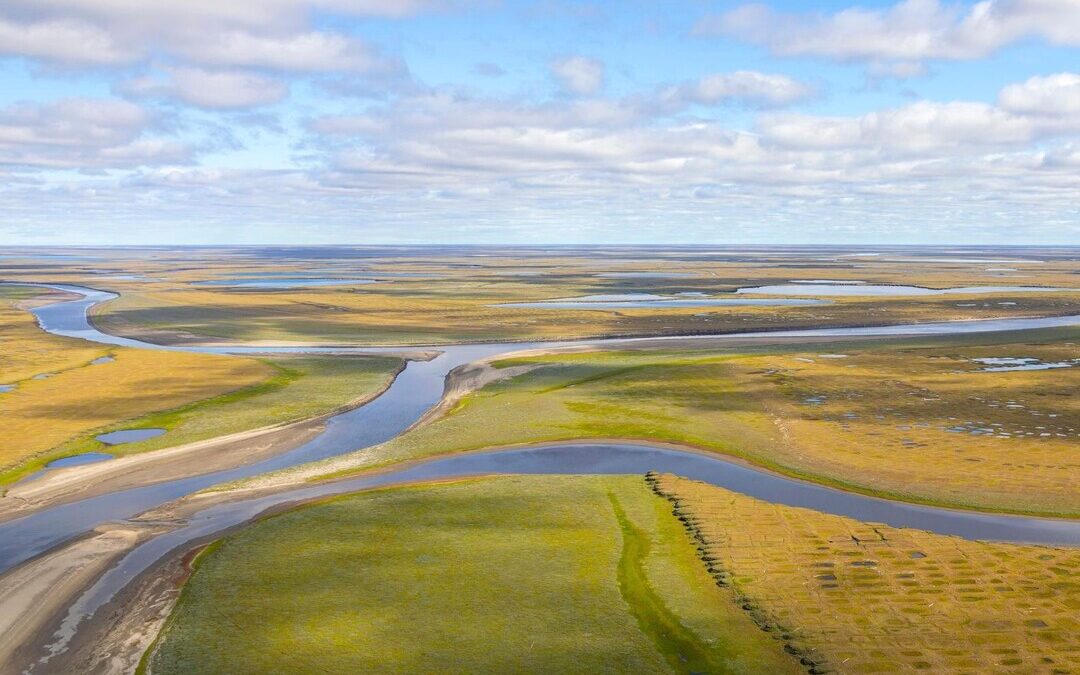Climate Change is Reducing Vital Nitrogen in Arctic Rivers, Study Finds
Arctic rivers are losing vital nutrients as climate change alters nitrogen balance, threatening marine ecosystems and Indigenous food webs.
Climate change is starving the Arctic Ocean of key nutrients, with its six largest rivers delivering far less of the nitrogen form that marine ecosystems rely on, according to new research published Monday.
The study, led by Bridger J. Ruyle of New York University’s Tandon School of Engineering, found that warming temperatures are changing river chemistry in ways that could deprive coastal food webs of inorganic nitrogen, an essential nutrient for primary production. The research appeared in “Global Biogeochemical Cycles” and was selected as an Editor’s Choice.
“This is a red flag for the Arctic,” Ruyle said. “Rapid changes in river nitrogen chemistry could completely transform how these marine ecosystems function.”
Two Decades of River Data
The researchers analyzed 20 years of water chemistry data from the Yenisey, Lena, Ob, Mackenzie, Yukon and Kolyma rivers. Together, these waterways drain about two-thirds of the land area that flows into the Arctic Ocean and supply nitrogen that supports up to 66 percent of primary production in coastal Arctic regions.
Between 2003 and 2023, inorganic nitrogen levels dropped in four of the six rivers, while dissolved organic nitrogen — a form far less accessible to marine life — increased.
Such changes mean that although nitrogen is still entering the ocean, it is arriving in a form that is harder for phytoplankton and other organisms to use.
Permafrost Loss the Main Driver
The shift stems from higher air temperatures and increased precipitation caused by climate change, which influence both river discharge and the thawing of permafrost, the study found.
Sophisticated statistical modeling pinpointed permafrost loss as the strongest factor behind the diverging trends in organic and inorganic nitrogen.
Permafrost — frozen soil and sediment — locks away organic material for millennia. As it thaws, that material decomposes, releasing nitrogen in organic forms.
In contrast, inorganic nitrogen typically comes from mineralized sources that are declining as landscapes and hydrological pathways change.
Implications for Ecosystems and People
Coastal Arctic food webs, which have sustained Indigenous communities for thousands of years, depend on a steady supply of bioavailable nutrients.
A sustained drop in inorganic nitrogen could disrupt these systems, with ripple effects up the food chain from plankton to fish, seabirds and marine mammals.
“This work demonstrates why we need to think about water quality and climate change as fundamentally linked challenges,” Ruyle said.
He added that the findings are part of his broader research focus on how human activity, climate change and natural processes interact to affect water quality.
Cascading Complexities
Ruyle’s earlier studies on contaminants such as per- and polyfluoroalkyl substances — so-called “forever chemicals” — and pharmaceuticals in wastewater have shown that environmental change can amplify water quality problems.
During drought, for example, reduced river flow means less dilution of pollutants. The Arctic nitrogen shift, he said, is another example of how climate-driven changes cascade through complex biogeochemical systems.
The study’s co-authors include researchers from the University of Canterbury in New Zealand, Florida State University, the Marine Biological Laboratory in Woods Hole, the University of Alberta and the Carnegie Institution for Science.
Funding came from the National Science Foundation through the Arctic Great Rivers Observatory program.
Ruyle said the findings should inform ecosystem management and climate adaptation strategies, warning that further delays in addressing the drivers of Arctic change could make recovery harder.
Nirmal Menon
Related posts

Subscribe
Error: Contact form not found.


